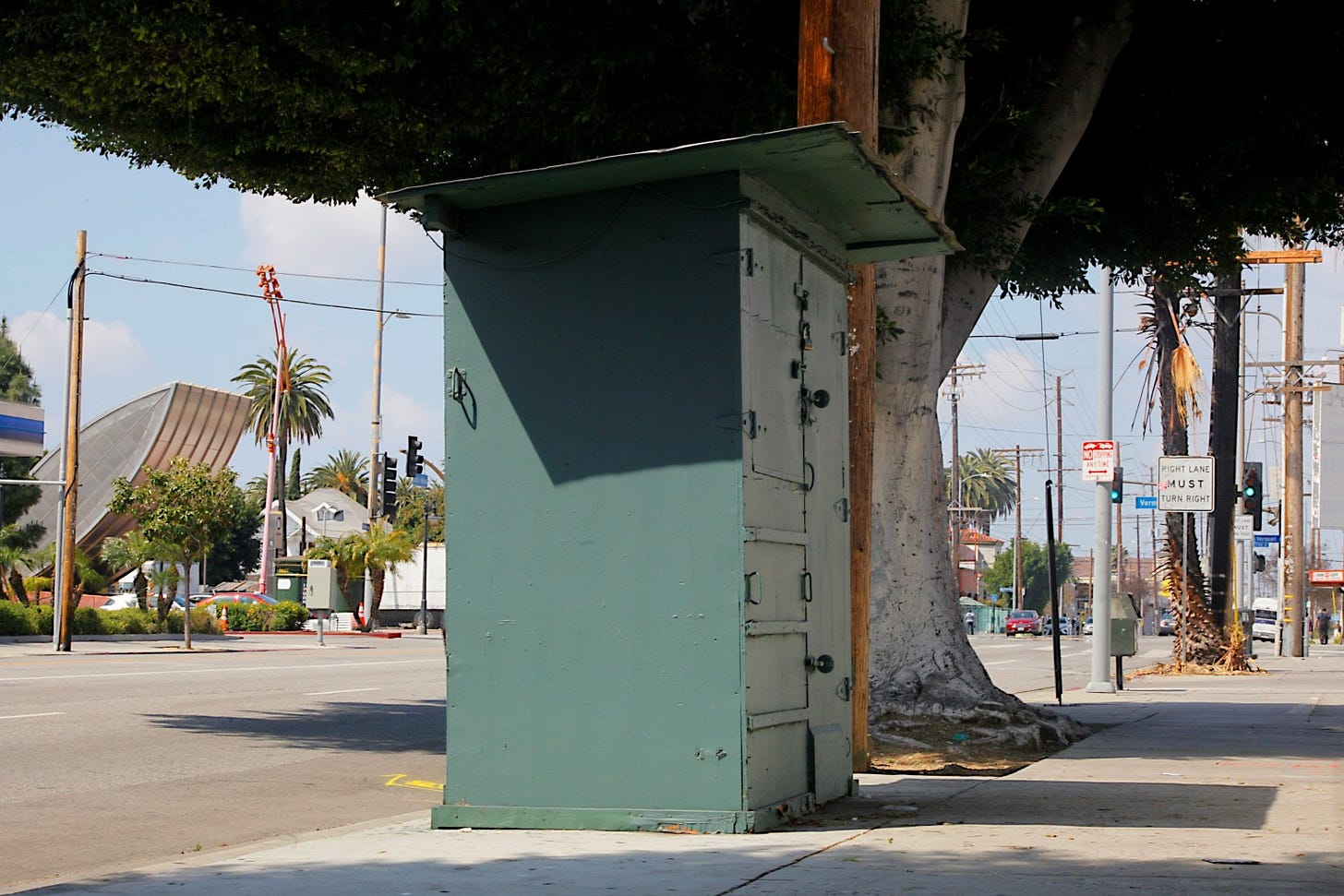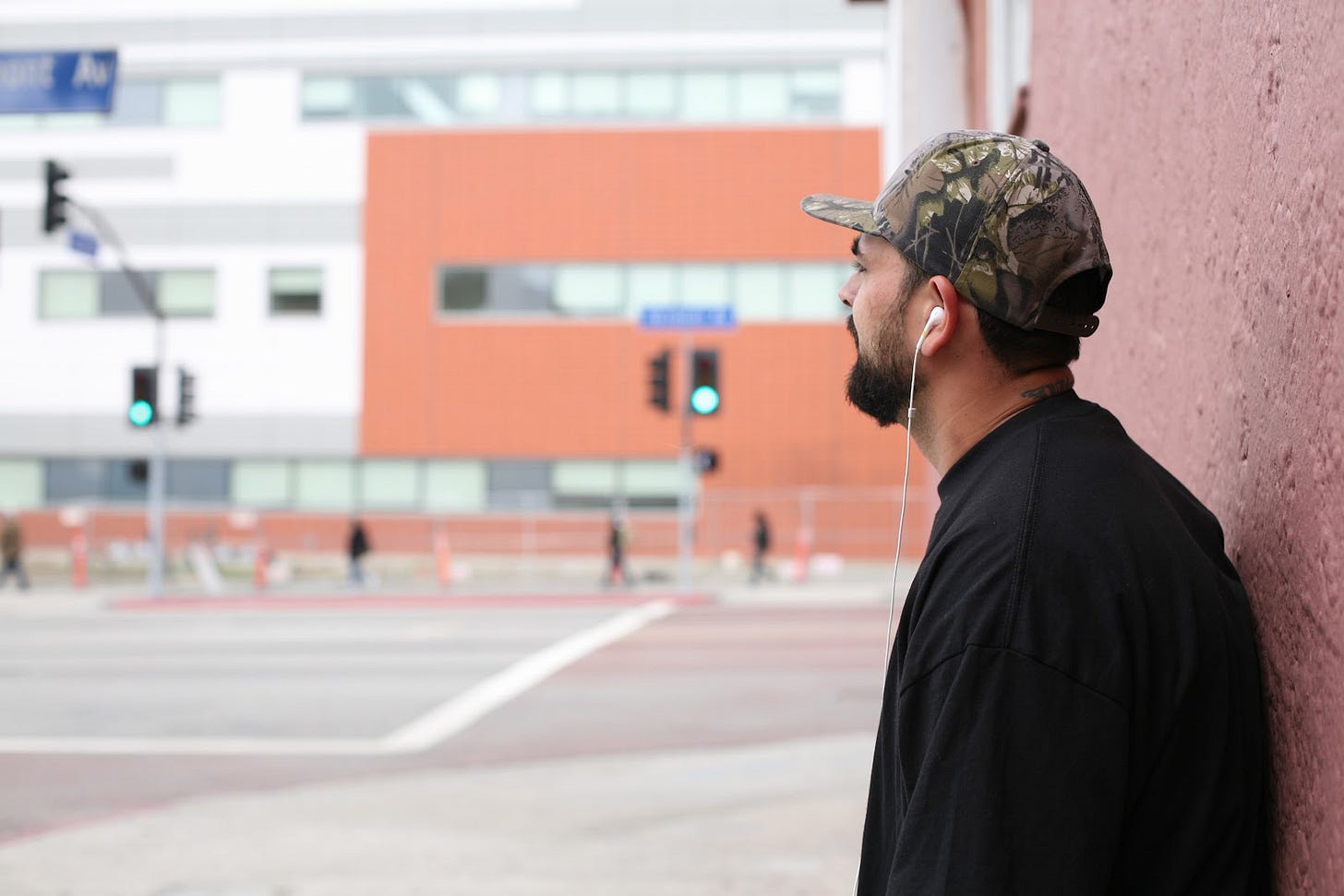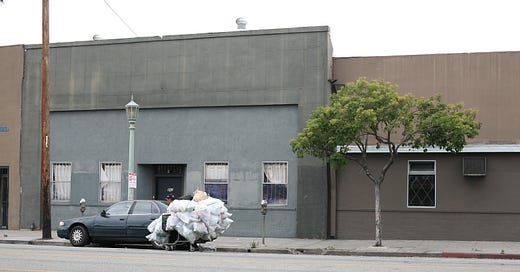In 2021, as part of our extensive, multimedia project “Making Our Neighborhood: Redlining, Gentrification, and Housing in East Hollywood.” J.T. and I (Samanta Helou Hernandez) published a 100-page magazine about these issues. The magazine, which sold out within two months, was a result of years' worth of work in the neighborhood. This September, we’re sharing four essays from the magazine for readers who didn’t get a chance to buy a copy.
It was just another weekend at the L.A. Public Library’s Central branch in downtown Los Angeles, when I found out that the neighborhood I called home was actually once “redlined.” Redlining was a policy in which L.A. County officials and members of the “Homeowners Loan Corporation” distinguished which areas were “desirable” and which were “undesirable” for investment from private banks and government loans based on their racial makeup.
I’ve gathered a few of the area descriptions of the “Los Feliz” and “East Hollywood” neighborhoods, respectively, all of them dated from 1939. It’s fascinating to see the old vecindades distinguished by the presence of “foreign families” or “negroes.” For example, in the Los Feliz neighborhood, the absence of “foreign families” or “negroes” based on the “deed restrictions” banning their presence, as well as single-family residential zoning, led to a “high green” or attractive rating from the HOLC:
“[In Los Feliz] …Deed restrictions cover both improvement costs and racial elements. Zoning is single-family residential. Conveniences are as available as is desirable in a multi-car garage neighborhood. This area was subdivided some 15 years ago, and was engineered and platted to contour resulting in well arranged and improved streets. Construction, maintenance and architectural designs are of the highest quality. Population is of a high character and many of the city’s wealthiest citizens reside here. Values shown above are somewhat conjectural as size and location of homesite affects prices. This also applies to rentals as quality of tenant is a large consideration. With a convenient location, ideal building sites and high caliber deed restrictions, this area should continue indefinitely to attract a substantial type of resident. On the basis of present development and future prospects area is accorded a “high green” grade.”
By contrast, in East Hollywood, to the Western Side of the area, because of the “concentration of Jewish families,” along with five & six room dwellings, or apartment buildings with five to six units, a “medial yellow” or “only fairly” attractive grade was accorded.
“[In East Hollywood] …There are no deed restrictions and zoning, while mainly single-family, also permits all types of multi-family residential structures in different parts and is also “spot zoned” for business and provides for numerous institutional developments. Two of the largest hospitals in the city are located within the area. Conveniences are all readily available. This area was originally largely occupied by the old Sullivan Farm and was subdivided approximately 25 years ago. Divided by and surrounded with business thoroughfares this far-flung area contains a miscellaneous array of multi-family residential development; however, the pre-dominating type of residence is 5 & 6 room dwellings which are generally of standard construction and fairly well maintained. It is said to be one of the community’s best rental districts. Rumors of scattered Japanese and Negro residents were not confirmed as none were located except upon the business thoroughfares. There is a concentration of Jewish families between Melrose and Santa Monica Blvd. east of Western Avenue. The population in general is heterogeneous, as is also the aspects of the improvements. There is a fair percentage of owner occupancy and many homes are still occupied by original owners. There is a decided trend at present toward business and income properties; however, it is thought that the major part of the area will remain predominantly single-family for many years to come. The area is accorded a “medial yellow” grade.”
Such standards beg the question, just who was the HOLC describing these conditions to? That is, just who determined that ‘negroes,’ ‘foreign,’ and ‘Jewish’ people reduced the overall quality of life or “property values”? In literature it’s called the white gaze, or the white imagination that dictates a certain narrative or reality as though it were a universal understanding, when in fact, no single gaze can actually dictate reality.

With these notes in mind, I admit I was excited to read about how the vecindad my family and I would come to call home sometime during the 1990s “fared in the ratings.”
In the eyes of the HOLC, East Hollywood towards the East side was considered ‘blighted’ for 15 percent of its residency consisting of ‘foreign’ families, and for 10% of it consisting of ‘negroes,’ as well as for the neighborhood’s multiple family dwellings and bungalows. This led to a “medial red” rating, meaning bank lenders were advised against issuing loans for homeowners or prospective homeowners here.
“[In East Hollywood] …The few deed restrictions which have not expired are irregular and largely non-effective. The major portion of area is zoned for single family dwellings, but multiple family dwellings are permitted in scattered sections. Conveniences are all readily available. This district was subdivided over 25 years ago as a popular price home district and has largely maintained the characteristics. Many of the improvements are of substandard construction and maintenance is spotted, being generally of a poor quality. Scattered throughout the area are a number of small “B” grade apartments, bungalow courts and other multi-family dwellings. The population is highly heterogeneous with more than a sprinkling of subversive racial elements, there being several concentrations of Japanese and Negroes within the district. There is also quite a Jewish population adjacent to the synagogue which is located in the northern part. While by no means a slum district, the area is definitely blighted and is accorded a “medial red” grade.”
I suppose it’s this kind of “advice” from the HOLC for lenders that might explain why most of the friends I grew up with in the neighborhood never came from a “home” in the way they’re shown on television and the movies. Essentially, all of us came from “dingbats,” “bungalows,” and other tiny spaces in apartment “dwellings” that all resembled one another more or less, and which our families would never come to own or call our property.

Looking at “East Hollywood” today, it’s also astounding to think there once were more Japanese and Black people in the neighborhood. And it’s sobering to consider how World War II and the Japanese internment which followed violently displaced such communities from the area. Considering these events and “modernization,” or the “slum clearance” policies popular after the war, one can see how major development has often been a matter of inflicting violence on communities, as well as a matter of restrictions of their space for wealthier, more privileged groups to reap the benefits.
It’s rarely ever “a walk in the park” to journey down the historical foundations which led to our modern dilemmas concerning access to space in our city. But in order to know where we’re going, we have to know where we come from, Los Angeles.
The posts for this month often reference a woman from our neighborhood named Karen Burch, whose family lived in the J-Flats/Virgil Village area for many generations, including when the neighborhood became redlined. Burch turns 70 at the end of this month and her niece is currently fundraising for her birthday to support Karen as she continues working on a book about her family’s story.




